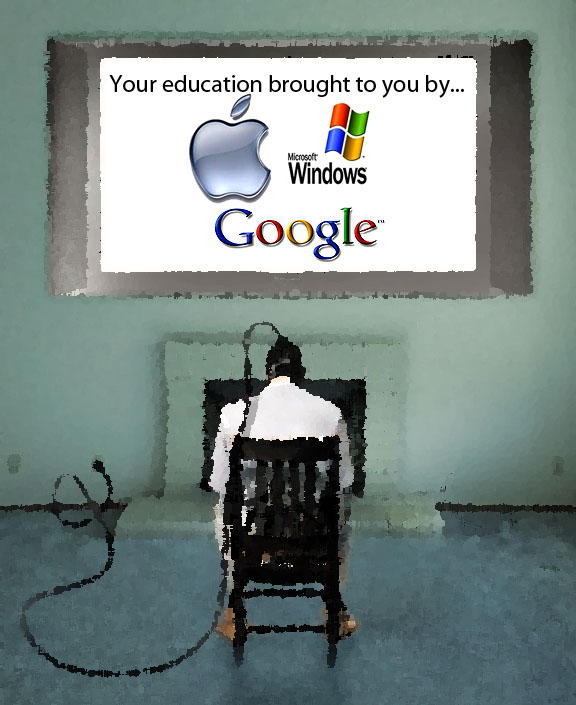One of the ways I differentiate my courses in order to cater to students who will become digital engineers and technicians is to find opportunities to compete in skills based competitions. Not only does this offer them advanced study in specific areas of computer technology, but it also provides curriculum material that often trickles down into my regular course work.
In the fall we took our first run at the CyberPatriot/CyberTitan IT security competition. Cyber-security is a high demand field we don’t produce enough of in Canada. With a very strong team of seniors we made big steps forward in each round figuring out how the competition works and what we needed to focus on to get better at it. Once we knew how to focus on Windows and Linux operating systems and Cisco networking, we got a lot better. By the final round we’d fought our way up to the sharp end of the competition and ended up finishing in the top 10 out of 90 odd Canadian teams. We’re off to Fredericton in May to see how we fare in the national finals.
I’ve been looking at ways to bring cyber-security into my curriculum and this ICTC run competition has provided me with a pile of material on all levels of IT security from the desktop all the way up to networking. In the meantime, I’ve got four students who are national finalists, which looks mighty fine on both a job and post-secondary program applications. The team isn’t a mono-culture either. One student is aiming at software engineering, another at information technology, another at teaching and the last isn’t ICT focused but is a strong, multi-talented student who can solve esoteric problems well. They also work well as a team, so we’re looking forward to seeing how we fare in the finals in New Brunswick.
Meanwhile, we’ve got four students aiming for Skills Ontario provincial finals in Toronto in May. Unlike last year when we tried to commute into the GTA for the event (utter misery), we are lining up hotel rooms and staying overnight, so everyone will arrive early and well rested – no seven hour school bus commutes for us this time. We’ve got last year’s bronze medalist at IT and Networking who is angling for a higher finish, last year’s 7th place electronics student in the hunt for a medal and last year’s 10th place web developer looking for a top five finish. I’ve also got a ringer for the first ever coding competition at Skills Ontario provincials. Like the CyberTitan competition, I’ve been able to lift a lot of useful course focuses out of Skills scopes. Our electronics have diversified and become much more complex thanks to our competitor’s work in skills (and I love that she’s beating the boys in a predominantly male competition). The web development we started last year is going to provide much of the coding focus for our new grade ten computer class that starts next year.
I get a real charge out of competition. I used to coach soccer at school but now I spend my time focused on supporting technology curriculum. The differences are many. Instead of only catering to students who are wealthy enough to not work and have the free time to play games at school all week, I find myself supporting a wide socio-economic range of students, which I find more gratifying. In the process I’ve been able to show many of them opportunities and post secondary pathways that they hadn’t considered before. I didn’t manage to produce a single professional soccer player in years of coaching, but I’ve managed to help engineers, technicians and digital artists begin their careers. Of course, I don’t get paid to do any of this, but finding students and helping them develop into competitive provincial and national challengers is one of the favourite aspects of my job, even though it isn’t actually my job. The hardest part is convincing them that it’s possible; doubt is the hardest thing to overcome.
Meanwhile, in the classroom this semester I’m running yet another round of capped at 31 students software engineering (it’s tricky to stuff 31 student computers into a classroom, but I manage it). I started this course three years ago as a bit of a joke, but I couldn’t run it like one, the opportunities it provides are too real. Our school started offering courses in hockey and camping and I jokingly suggested I make a video game course if we’re giving credits out for recreational activities. I spent much of my youth playing hockey, camping and video gaming, so why not? Of course, I didn’t get high school credits in those things, but I digress.
Our software engineering class has become an applied coding course that focuses on engineering process rather than the mathematical minutia of coding, which I leave to computer science. We start with IEEE’s Software Engineering Body of Knowledge (SWEBOK) to get a handle on best practices in real-world software building, then we learn 3d modelling in Blender and scripting in C# in Unity in order to prepare everyone for some game development.
This class has produced published software since the first year it ran and has allowed students to produce digital portfolio work that has gotten many graduates into some of the most challenging post secondary programs in the province. Like the competition opportunities described above, software engineering has turned into an intense but demanding real world opportunity that allows senior students to step up and demonstrate some leading edge digital skills.
We’ve just finished the training portion of the course where the grade twelves introduce the grade elevens to SWEBOK, the basics of 3d modelling and the Unity game development platform. With these basic skills in place everyone then reorganizes into startups and proceeds to develop software titles for the rest of the semester. This time around we’ve got a mini putt VR simulator, a VR based survival game called Grave Dug, a nostalgia arcade title called Devil’s Hollow, a two player cooperative asymmetrical puzzle game called Shield and Staff, an atmospheric stealth title called Instinct and for the first time we’re also developing a non-interactive title focused on 3d animation that should offer our 3d artists a less restricted and more experimental approach to modelling without the complexities of interactivity. We hope to use VR (Tiltbrush, Oculus Medium) and our Structure Sensor 3d scanner to produce less Blenderized looking models and experiment with our design process.
 My senior computer technology (TEJ) courses also focus on real world problem solving. We cover CompTIA industry testing for A+ technician in 3M and NETWORK+ administration in 4M, and both courses also do in-school tech support. We’re also building VR ready systems for our board SHSM program to distribute to other schools. Working in real world situations with live problem solving and deadlines is something my students find invaluable, whether it’s in class or in competition. It gives them strong portfolio work (check out our ever expanding collection of 3d models, in 3d!) and prepares them for the intensity of life outside of the rubber walled, failure-not-an-option world of high school. It’s a lot of extra work, but I didn’t get into teaching computer technology in order to be able to spin the same lessons out year after year; the constantly changing nature of the subject area is one of the reasons I chose to do it. The real world challenges and intensity of competition keeps things interesting for me too.
My senior computer technology (TEJ) courses also focus on real world problem solving. We cover CompTIA industry testing for A+ technician in 3M and NETWORK+ administration in 4M, and both courses also do in-school tech support. We’re also building VR ready systems for our board SHSM program to distribute to other schools. Working in real world situations with live problem solving and deadlines is something my students find invaluable, whether it’s in class or in competition. It gives them strong portfolio work (check out our ever expanding collection of 3d models, in 3d!) and prepares them for the intensity of life outside of the rubber walled, failure-not-an-option world of high school. It’s a lot of extra work, but I didn’t get into teaching computer technology in order to be able to spin the same lessons out year after year; the constantly changing nature of the subject area is one of the reasons I chose to do it. The real world challenges and intensity of competition keeps things interesting for me too.
from Blogger https://ift.tt/2JbpxC1
via IFTTT















